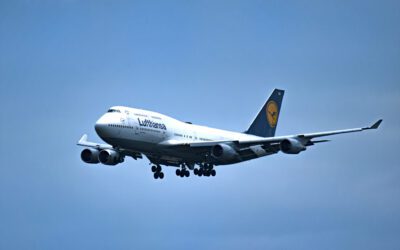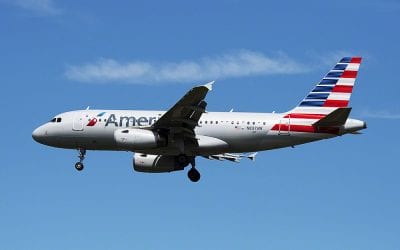In the U.S., major airlines have had to report on-time performance since 2003. That means, according to the U.S. Department of Transportation, a flight is counted as “on time” if it arrives at the gate less than 15 minutes after its scheduled time.
In GDS reservations systems, travel agents and travelers can then see flight statistics, expressed as a number from 0-9, referring to the percentage of time that particular flight was on time the previous month. (4, for example, means from 40-50 percent; 8, from 80-90 percent, and so on.) This information can be helpful for travelers planning flights, since while past performance is no guarantee, it does give an idea of which flights are frequently late.
As a travel agent and frequent travel myself, though, I’ve noticed that airlines will try very hard, when their plane is slightly delayed, to arrive at the gate within 15 minutes of the scheduled arrival. To that end, I’ve been on flights and seen flights make up a great deal of time in the air, which is great for passengers involved.
But, what seems to be not so great is what happens when a flight is hopelessly late. Sometimes, when an airline has limited take-off slots due to weather or traffic, they’ll prioritize the on-time flights, even if it makes delayed flights later. Plus, it also seems as if the airport staff may also prioritize flights with a chance of keeping on schedule. This phenomenon was witnessed last week with a client flying from Newark to San Francisco.
There had reportedly been thunderstorms in the New England area, although my client didn’t report seeing any. Flights to San Francisco were leaving on average about 40-50 minutes late. His flight to San Francisco, however, was increasingly delayed. First, it was flying a Newark-Boston-Newark turnaround before heading to San Francisco. Finally, the flight arrived back at Newark ready for its trip to San Francisco. The schedule board was still showing an 8:16 p.m. scheduled departure, though it was already well past that time.
Passengers did deplane quickly, though, and those waiting for the flight were hopeful of leaving by 10 p.m.
Except there was no gate agent and no announcements. Another flight to San Francisco (SFO) several gates away was staffed, and departed at 9:55 p.m. and made it to SFO only 10 minutes late — thus “on-time.” The delayed 8:16 p.m. flight didn’t even board until almost 10:30 p.m. and didn’t leave the gate until 10:45 p.m., arriving 2 hours and 15 minutes late. In-flight, the pilot apologized and said that Newark was understaffed and that the original gate agent who was going to turn around their flight “just left.”
There is no way of knowing if getting one flight out on time at the expense of making another already-late flight later is official policy, but I’ve seen it happen over and over again. When a plane still has a possibility of being on time, it often seems like not only do gate agents work faster, but pilots try to make up time in air. Whereas, when a plane is really late, the airlines’s attitude is, “whatever, it’s a lost cause.”
Out of curiosity, last night I actually looked at United’s flight times from Newark to San Francisco. The 9:15 p.m. departed 40 minutes late and arrived “on-time.” It was one of the faster flights by 10-20 minutes in air. No doubt, their passengers were happy. On the other hand, it’s no fun being on a “lost cause” flight.
So how about you, Consumer Traveler readers? Have you had the experience of an airline working hard to make it into that on-time window? Or, the opposite experience where your flight seemed to be delayed further to prioritize other flights?
[poll id=”47″]
Janice Hough is a California-based travel agent a travel blogger and a part-time comedy writer. A frequent flier herself, she’s been doing battle with airlines, hotels, and other travel companies for over three decades. Besides writing for Travelers United, Janice has a humor blog at Leftcoastsportsbabe.com (Warning, the political and sports humor therein does not represent the views of anyone but herself.)



